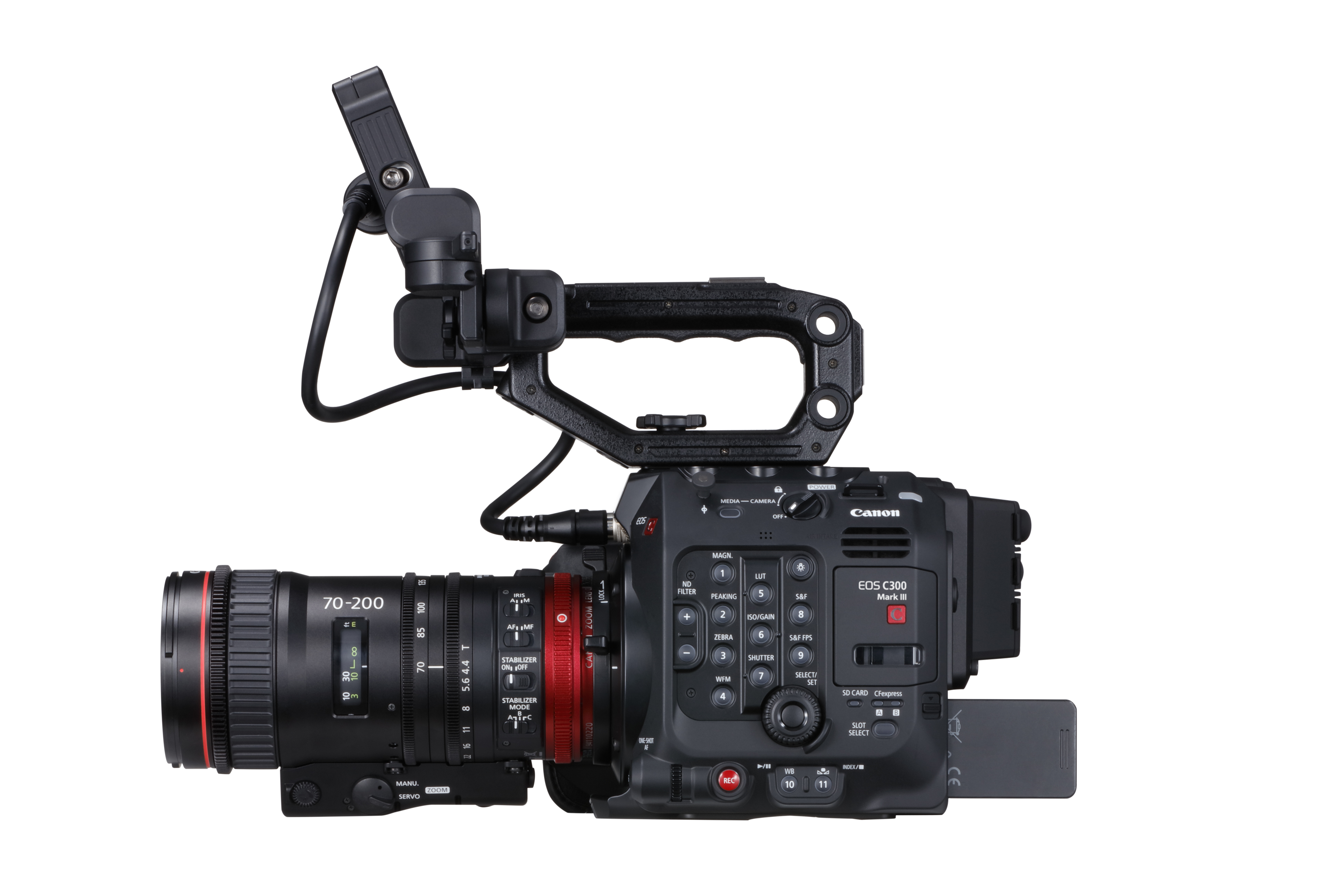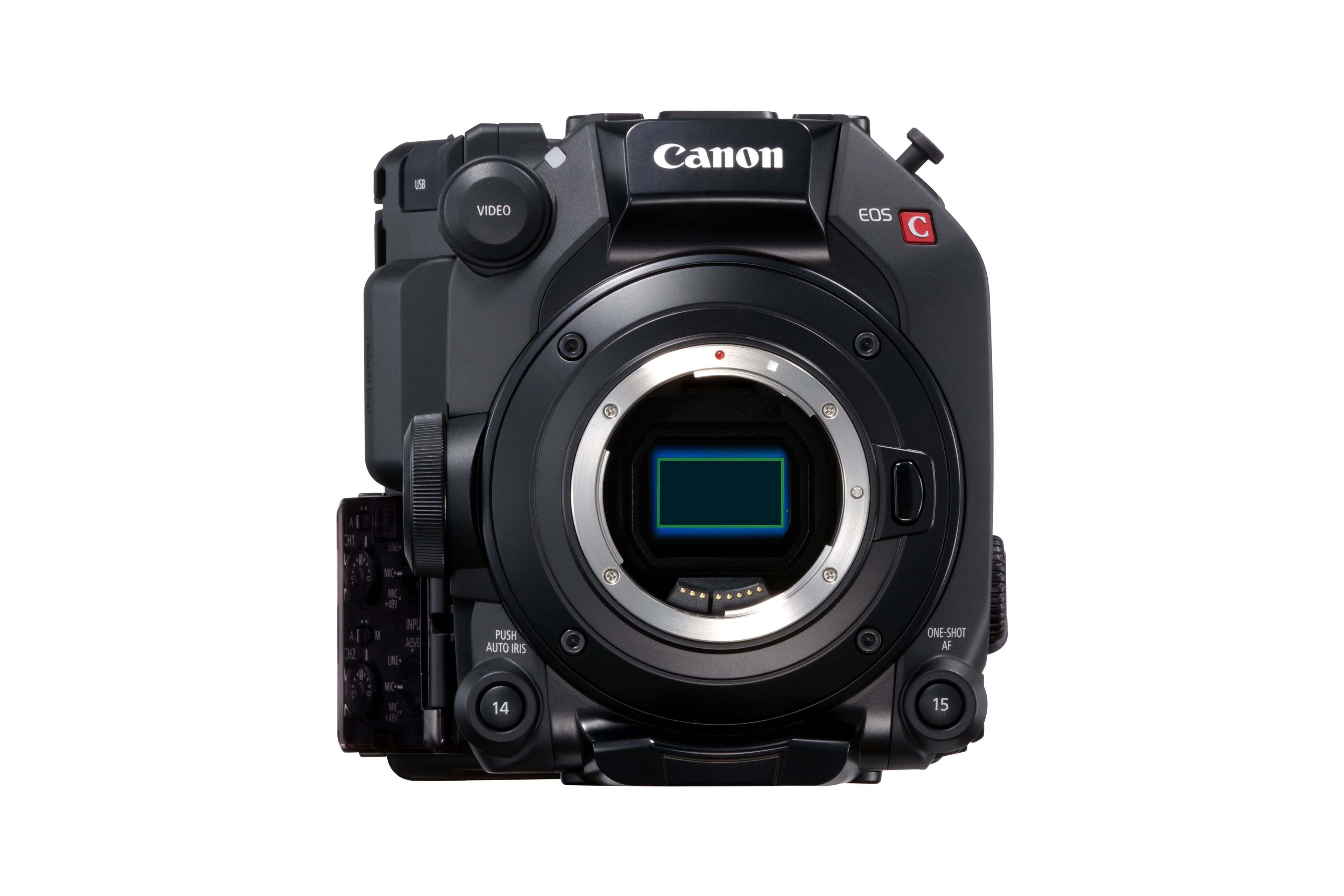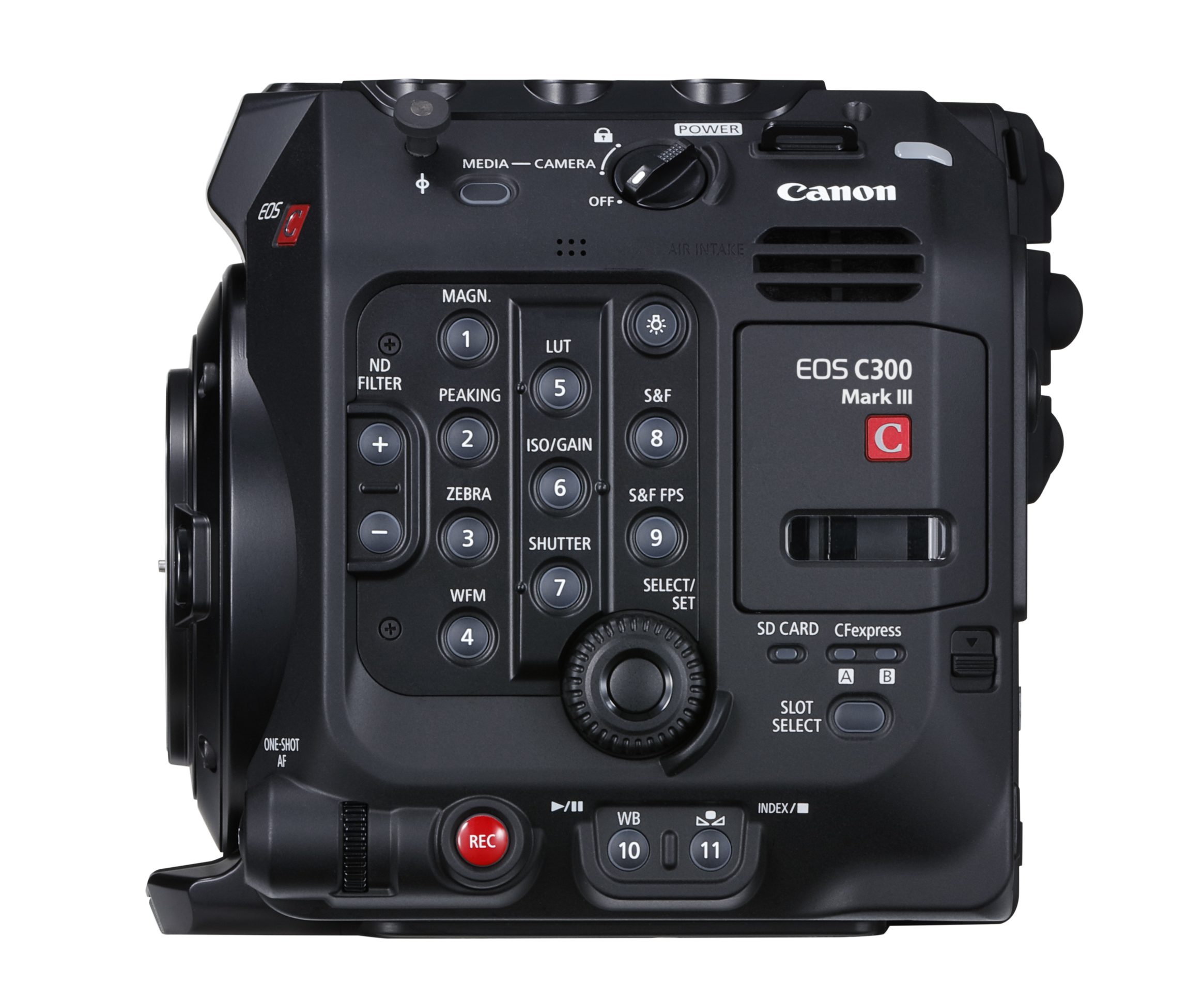Modular, 16 Stops of dynamic range, 4K Canon Raw Lite, with, and this next feature is a nice big feature, Dual Pixel CMOS Autofocus up to 120fps. The Canon C300 Mark III is throwing all kinds of great features at you to drool over. 
But there is more; Dual Gain Output (DGO) featured in the 35mm sized sensor. Just like the Canon C500 Mark II, the new Canon EOS C300 Mark III features a modular design and utilizes the same expansion packs. There is a lot to unpack with the new Canon C300 Mark III. First off, I cannot believe we are now on Mark III of this industry workhorse. Second, this Canon C300 Mark III has an estimated retail price of $10,999.00, which is less expansive than the Mark I and Mark II options when those two cameras hit the market. 
Let’s get to the sensor size found within the body of the Canon C300 Mark III. Super 35mm is a cinema industry standard with an astounding number of cinema lenses to mount onto the user-changeable lens mount. On the one hand, you have the Canon C500 Mark II and its 5.9K full-frame sensor as a very, and I mean very, excellent option. The Canon C300 Mark III is also an excellent option with industry-standard sensor sizing. You can not go wrong with either of these two cameras.

In 2K recording mode, the Canon C300 Mark III camera features recording speeds up to 180p. Equipped with Canon’s latest video imaging processor, the DIGIC DV 7, the camera achieves more fluid and efficient recording of 4K and HDR and can process high-speed video recording, including 4K at up to 120p.
The C300 Mark III camera utilizes Cinema RAW Light, a very powerful and useful tool for helping to cut the data size of a file to about one-third to one-fifth of a similar Cinema RAW file, without losing grading flexibility. In addition to being able to record 4K and 2K RAW data internally without using an external recorder, the camera also supports XF-AVC (with a choice of Intra or LongGOP), offering flexible options in recording durations.
Like its big brother the Canon C500 Mark II, the Canon C300 Mark III camera is modular and customizable. Included with the camera are 13 accessories, such as a 4.3-inch LCD monitor and the GR-V1 grip. Users can also choose from a wide range of additional optional accessories that allow them to configure the C300 Mark III camera to a camera build best suited for the situation ahead. Optional accessories include the EVF-V70 electronic viewfinder, SU-15 shoulder support unit, and EU-V1 and EU-V2 expansion units. The EU-V1 expansion unit allows for gen-lock, sync out, remote use, and an ethernet connection, while the EU-V2 expansion unit features those functions plus a V-mount battery connection, two analog XLR audio ports and 24v DC Out. The EU-V2 that I tested on the Canon C500 Mark II is one of my favorite expansion units. Additionally, the mount kits (sold separately) allow users to exchange the EF mount with an EF cinema lock mount or PL mount.
Additional features of the Canon EOS C300 Mark III camera include:
- 4K DCI/UHD up to 120 fps and 2K/HD up to 180 fps — with 4:2:2 10-bit XF-AVC recording
- 2 CFexpress media card slots
- Compatibility with EF and PL lenses (with optional mount kit) as well as anamorphic and spherical lenses
- Dual Pixel CMOS AF, up to 120fps
- 5-axis electronic image stabilization, which can be utilized even without the use of a lens with IS functionally
- Support for Canon Log 2 and 3
- Four-channel recording that supports 4 XLR inputs with the use of the EU-V2 expansion unit
- User LUT allowing users to upload and apply custom LUTs
- The camera body is approximately 6 in (width) x 5.8 in (height) x 6.6 in (depth) with a bodyweight of approximately 3.9 lbs., making it compact and lightweight.
Pricing and Availability
The Canon EOS C300 Mark III Cinema Camera is scheduled to be available later in 2020 for an estimated retail price of $10,999.00

